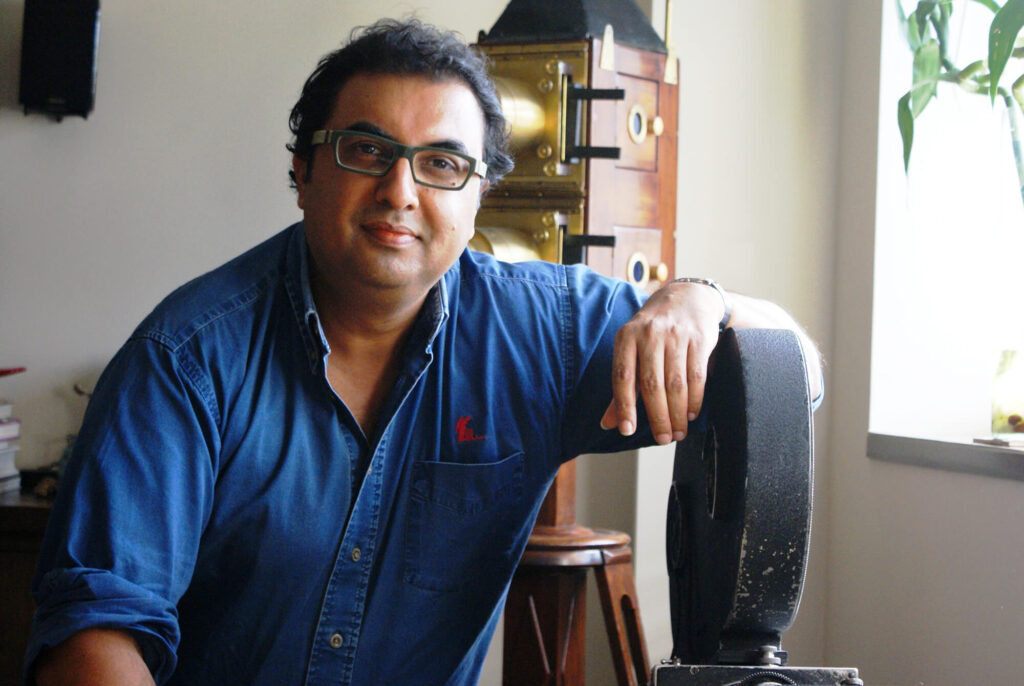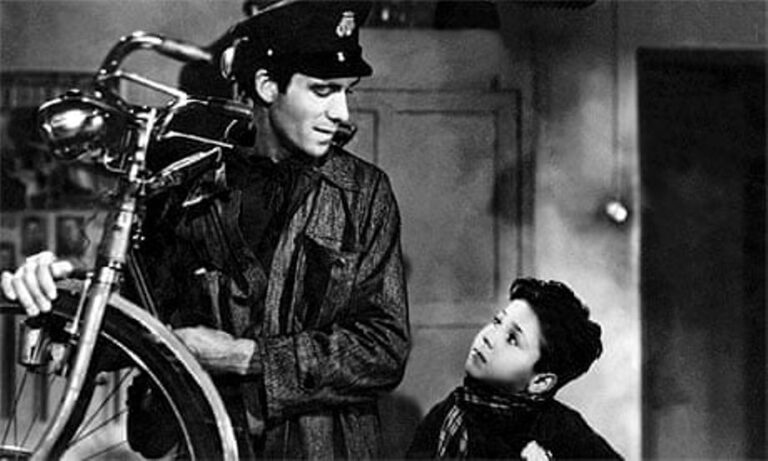Shivendra Singh Dungarpur is a lone warrior fighting for the cause of preserving films of the yore. A producer-director graduating from the FTII, Pune, he laments that of 1700 silent films made in India, only nine have managed to survive. Shoma A. Chatterji sketches his role as a committed archivist.
The terms “restoration” and “preservation” have very positive associations so far as cinema across the world is concerned. The digitalisation of cinema has spread the idea that celluloid cinema on 8mm, 16mm and 35 mms is passé and will no longer be in vogue in another ten years perhaps. Then, what about the classic films that have not been digitised because they were not fit enough to be digitised or, perhaps, it did not occur to anyone that these might get destroyed because of lack of proper infra-structure in film organsations for the conservation and preservation of old films, classic or not?
Shivendra Singh Dungarpur began assisting his mentor, writer-lyricist and director, Gulzar. Gulzar suggested he enroll himself at the Film and Television Institute of India (FTII), Pune to study film direction and scriptwriting. After graduating from FTII, Shivendra launched himself as a producer-director in 2001 under the banner “Dungarpur Films”.
“I always was always interested in preservation – something I learnt from my father. I had read an interview with Martin Scorsese about the Il Cinema Ritrovato festival in Bologna, Italy where they screened restored films. I was so fascinated that I decided to attend the festival. I think the seeds of restoring and preserving concretely as my life’s mission were sowed with this decision. It worked like a trigger,” he says.
“When we began the Film Heritage Foundation in 2015, saving India’s film heritage was an obscure cause with most people asking, “What is film heritage?” Four years later, after having conducted film preservation and restoration workshops in Mumbai, Pune and Chennai, we have finally put film preservation on the map of India,” says Shivendra Singh Dungarpur who is fighting a battle with a small team of dedicated people for the preservation and restoration of film prints. Another workshop is scheduled to be held in Kolkata in November in collaboration with the 24th Kolkata International Film Festival. The restored celluloid prints of Satyajit Ray’s first trilogy will be screened during the workshop.
Since its inception in 2015, this highly commendable flagship training programme has travelled successfully to cities such as Pune, Chennai, Hyderabad and Kolkata and attracted unconditional endorsements from film luminaries such as Amitabh Bachchan, Shyam Benegal, Naseeruddin Shah, Kamal Haasan, Mani Ratnam, S.S. Rajamouli, Nagarjuna, Chiranjeevi, Prosenjit Chatterjee and Goutam Ghose.
“My fascination with films began as a child when I spent warm, summer evenings on the verandah of my grandparents’ home in Bihar, watching the antics of Buster Keaton and Charlie Chaplin to the accompaniment of the whirring sound of the film projector. I loved the smell of film, holding the film strips up to the light to see tiny images that magically sprang to life as the film threaded its way through the projector. I grew up to become a filmmaker. But while making films is my passion, it is inextricably linked to the artistry, texture and feel that celluloid lends to the image and the stories that we tell,” says Dungarpur.
In an interview to Manasi Chandu of The Indian Post in September 2020, Dungarpur lamented the lack of sufficient funding needed to finance such an expensive project.
“Films are not a singular experience. While creating cinema, humans established it as a form of group activity, with shared experiences. How can you negate that experience to something online?” asks Dungarpur.
In March, 2020 when the lockdown was announced, Dungarpur had to shut down his organisation — Film Heritage Foundation (FHF) — overnight, not knowing how long the lockdown announced by the government would last. “Running an archive is like taking care of your child. And when that’s suddenly taken away from you, and you have no means of taking care of your baby, you don’t know what to do”, said Dungarpur.
The main concern for the archive was the condition of all the film material in storage, which required preservation in temperature-controlled vaults and dehumidifiers with routine cleaning and checks to keep them from getting exposed. The archive currently has over 50,000 photographs, 500 films, and other film material including song booklets, lobby cards and posters.
Unable to keep away from his ‘child’, Dungarpur decided to quietly walk down from his house in Breach Candy to the archive in Tardeo to open it up four weeks after the lockdown was announced. His paranoia wasn’t unfounded — since the humidifiers and air conditioner were turned off for a month, some of the film material had crumbled to dust, with a few nitrate reels decomposing, thanks to Mumbai’s humidity.
But there was no time to fret. Dungarpur took it upon himself to clean up the office, and made it a point to visit his workplace regularly to run the air conditioner and dehumidifiers in order to save the film material.

He is a patron of the British Film Institute and a donor for the restoration of Hitchcock’s silent classic The Lodger. He also facilitated the restoration of the Indian classic Uday Shankar’s Kalpana (1948), done by Scorcese’s World Cinema Foundation that was premiered in the Cannes Classic section in 2012. “As one of the first initiatives, we curated a package of Indian films and newsreels entitled The Golden 50’s: India’s Endangered Classics screened at Il Cinema Ritrovato festival in Bologna, Italy from June 28 to July 5 2014 in collaboration with the National Film Archive of India (NFAI) and the Films Division,” Dungarpur elaborates. The idea was to showcase India’s unique cinematic heritage and to create awareness about the urgent need for its preservation and restoration. Most of the original negatives do not exist and what survive are dupe negatives and prints in poor condition.
Dungarpur’s journey as a filmmaker began with the feature-length documentary The Celluloid Man which maps a historic journey with P.K. Nair the first director of the National Film Archive of India in Pune. Celluloid Man won two National Awards in India at the 60th National Film Awards for the Best Historical / Biographical Reconstruction and for Best Editing in 2013. It has also won the “Nestor The Chronicler” award for the best archival film for Celluloid Man at the XII Kyiv International Documentary Film Festival 2013, Ukraine. Dungarpur was given the Bimal Roy Memorial Emerging Talent Award. He also bagged the Special Jury Award at the 13th edition of the Mumbai International Film Festival (MIFF) 2014.
His next documentary The Immortals (2015) was commissioned by the Busan International Film Festival to direct a commemorative documentary on Indian cinema. He begins with Watson’s Hotel in South Mumbai, where representatives of the pioneering Lumiere Brothers cinematic firm organised India’s first film screening, in 1896. His latest film Czech Mate: In Search of Jiri Menzel with an incredible screening time spanning seven hours and more, is his most ambitious film. It is the longest documentary to have cleared by the Central Board of Film Certification. It can be said to be the longest history on celluloid to explore the history of the Czech New Wave that took the world of cinema by storm around the 1950s.
In October 2022, the Film Heritage Foundation held a festival in tribute of Amitabh Bachchan’s 80th birthday. The films premiered were Don, Kaala Patthar, Kaalia, Kabhi Kabhie, Amar Akbar Anthony, Namak Halaal, Abhimaan, Deewar, Mili, Satte Pe Satta and Chupke Chupke. It had also set up an exhibition ‘BACHCHAN – BACK TO THE BEGINNING’ that highlights significant moments and aspects of the superstar’s career captured for posterity through ephemera including rare and unseen photographs, art works and memorabilia. The exhibition has been meticulously researched and curated by film historian and author S.M.M. Ausaja, who had previously mounted exhibitions on Amitabh Bachchan’s 70th and 75th birthdays respectively.
“Films are a part of our cultural history. I was shocked to discover that of the 1700 silent films were made in India of which only 9 survive thanks to the efforts of Mr. Nair. He travelled to remote parts of India to collect and save cans of rare films. The fact that Dadasaheb Phalke is recognized today as the father of Indian cinema is Mr. Nair’s doing. He was truly democratic as an archivist trying to save any film that he could get his hands on be it world cinema, Hindi popular films or regional Indian cinema. He even took world cinema to the villages of India,” Dungarpur sums up.


 Shoma A. Chatterji is a freelance journalist, film scholar and author. She has authored 17 published titles and won the National Award for Best Writing on Cinema, twice. She won the UNFPA-Laadli Media Award, 2010 for ‘commitment to addressing and analysing gender issues’ among many awards.
Shoma A. Chatterji is a freelance journalist, film scholar and author. She has authored 17 published titles and won the National Award for Best Writing on Cinema, twice. She won the UNFPA-Laadli Media Award, 2010 for ‘commitment to addressing and analysing gender issues’ among many awards.